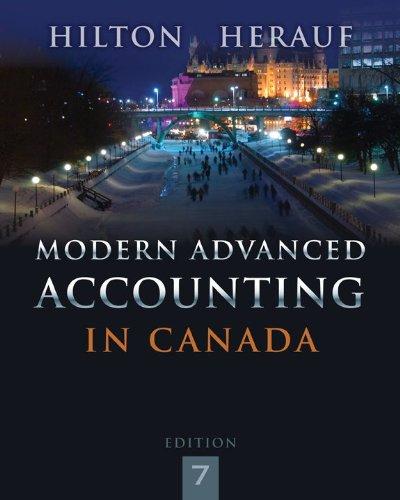The partial trial balances of P Co. and S Co. at December 31, Year 5, were as
Question:
.png)
Additional Information
€¢ The investment in the shares of S Co. (a 90% interest) was acquired January 2, Year 1, for $90,000. At that time, the shareholders€™ equity of S Co. was common shares of $60,000 and retained earnings of $20,000 and the common shares for P Co. of $150,000.
€¢ Net incomes of the two companies for the year were as follows:
P Co. ..... $60,000
S Co. ..... 48,000
€¢ During Year 5, sales of P Co. to S Co. were $10,000, and sales of S Co. to P Co. were $50,000. Rates of gross profit on intercompany sales in Years 4 and 5 were 40% of sales.
€¢ On December 31, Year 4, the inventory of P Co. included $7,000 of merchandise purchased from S Co., and the inventory of S Co. included $3,000 of merchandise purchased from P Co. On December 31, Year 5, the inventory of P Co. included $20,000 of merchandise purchased from S Co. and the inventory of S Co. included $5,000 of merchandise purchased from P Co.
€¢ During the year ended December 31, Year 5, P Co. paid dividends of $12,000 and S Co. paid dividends of $10,000.
€¢ At the time that P Co. purchased the shares of S Co., the acquisition differential was allocated to patents of S Co. These patents are being amortized for consolidation purposes over a period of five years.
€¢ In Year 3, land that originally cost $40,000 was sold by S Co. to P Co. for $50,000. The land is still owned by P Co.
€¢ Assume a corporate tax rate of 40%.
Required:
Prepare a consolidated statement of changes in equity for the year ended December 31, Year 5.
Step by Step Answer:

Modern Advanced Accounting In Canada
ISBN: 9781259066481
7th Edition
Authors: Hilton Murray, Herauf Darrell





